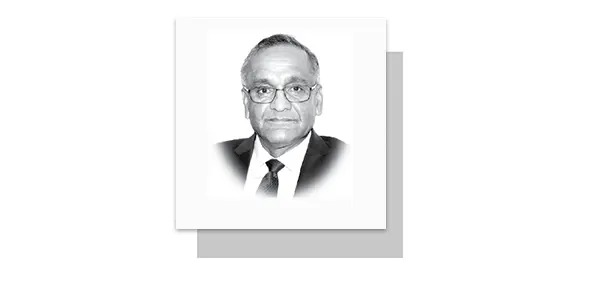DECISIONS and policies are best analyzed if stripped of all hindsight wisdom; travelling back into the times when these policies were made. On 14 August 1947, Pakistan assumed the status of a sovereign state. Questions on Foreign Policy started to rise. Soon after the World War-II, that was the time when world was going through its most defining phases of 20th century. New global political and financial structure was taking shape. Rules of the game were being decided. The two-year-old United Nations Organization (UNO) was beginning to take charge of its affairs, while the three-year-old Bretton Woods institutions—the IMF and the World Bank—had started to influence the global monetary landscape. While the UN and IMF had come into existence, trade rules were still a work in progress, culminating a year later in GATT-1948. Interestingly, all three—the UN, IMF, and GATT—were predominantly negotiated by two countries, the US and the UK. Some of today’s major players, like the People’s Republic of China, Japan, and most of Europe, did not have a voice at that time. The US was at the height of its power.
Japan, nuked twice, was a political non-entity and so was most of the continental Europe which presented the scene rubble with most of the nations awaiting Harry S Truman to sign the Marshall Plan for reconstruction. Large chunks in Asia and Africa were still under colonial rule. Huge China – was struggling with a civil war with unpredictable outcome. Great Britain, though victorious was economically drained. Its Army that had led Britain to success included hundreds of thousands of Indian Muslim soldiers, who had just returned from the battlefields. In February 1946, Stalin’s Soviet Union had asserted the “irreconcilable ideological gap” between capitalism and socialism, bringing Eastern European countries into its fold: a development that Winston Churchill called the “iron curtain”. The Cold War had begun; and quickly, most countries in the world had started to pick their alliances. Among them was Pakistan. Meanwhile, in our own region, voices on territorial claims across Durand Line were being heard from neighbouring Afghanistan, the only country to vote against Pakistan’s admission to the United Nations in 1947.
Despite the massive ongoing riots, the promise of India and Pakistan living as two “separate,” rather than “hostile,” states survived until partition. Recall Quaid-i-Azam’s address, in which he hoped that the two countries would “settle down as friends and neighbours like Canada and the United States, and other sovereign states both in North and South America.” However, within three months of independence, Indian Army aggression in Jammu and Kashmir dashed these hopes. The Kashmir dispute highlighted Pakistan’s security concerns and the need to strengthen its army. Threat was real. Search for security became Pakistan’s top priority. That is where Pakistan’s priorities contrasted with those of India. Coupled with that was the need for economic sustenance. It was against the backdrop of these domestic realities that we witnessed the early days of the Cold War, with countries aligning themselves with either the US-led capitalist camp or the Soviet Union-led socialist camp. Most countries in Asia leaned toward the West, a trend that led Turkey, Iran, and Iraq to join the CENTO security alliance, while New Zealand, Australia, Thailand, and the Philippines joined SEATO. The Soviet camp, meanwhile, was largely concentrated in Eastern Europe. A few words about the popular myth that Prime Minister Liaquat Ali Khan declined an invitation to visit Moscow and accepted one from Washington: there is no authentic reference to show that any formal invitation was received from the USSR. Moreover, for countries in Asia and Africa, Moscow was not a real alternative to Washington. The option was to maintain somewhat closer relations with Moscow alongside ties with Washington. Many countries that later joined the Non-Aligned Movement were, in fact, well-aligned with the West.
For a country like Pakistan, getting into the Western camp seemed the way to go; especially, to meet its security needs. And to the extent of meeting those security needs, that policy did work. Military assistance provided by the US did serve Pakistan’s security interests and in early years. As for Pakistan’s policy towards the Muslim world, its roots date back to pre-partition times. Even before the creation of Pakistan, Indian Muslims were neither oblivious to, nor silent on the global developments affecting Muslims. Most well known reaction of Indian Muslims was that to end of Caliphate in Istanbul. Quaid-i-Azam’s support for Palestinians remained vocal and consistent for years preceding 1947. He vocally supported Palestinians during the 1936-39 revolt in which Palestinians sought independence from the colonial masters and wanted Britain to desist from its support for establishment of a Jewish state. Later, UN General Assembly approved the Plan to partition Palestine in November 1947; that was just months after the creation of Pakistan. Jinnah then wrote to US President Truman against that plan. These were some of the many occasions where Muslims in India loudly voiced their support for Muslims elsewhere in the world. In summary, Pakistan’s foreign policy in early days was dictated by its security concerns and was set against the Cold War dynamics. Roots of its relations with the Muslim world go back to Khilafat Movement.
—The writer is former Special Secretary, Pakistan Foreign Ministry and former Ambassador to Nepal and South Africa.










